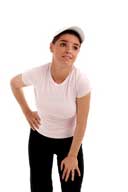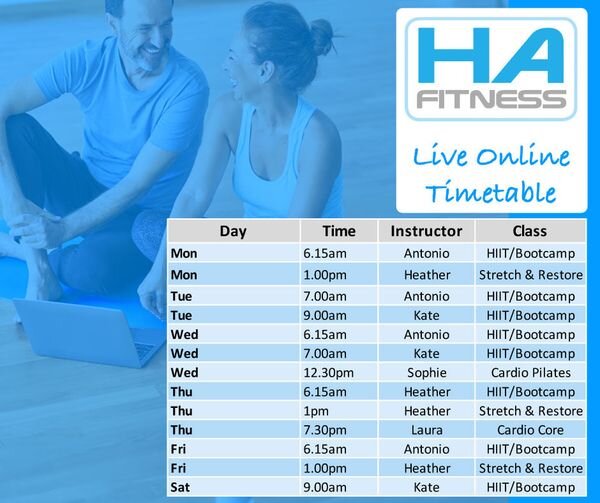 So after a good workout, you go to bed feeling physically tired but great. The next morning, your alarm goes off, and your plan is to jump out of bed, all fired up for another session. But oooow it hurts. You can hardly move, you plummet to the floor and crawl to the bathroom. After loosening up a little in the shower, you’re ready to attempt the stairs. Backwards is the only option. What exactly has happened?!!
So after a good workout, you go to bed feeling physically tired but great. The next morning, your alarm goes off, and your plan is to jump out of bed, all fired up for another session. But oooow it hurts. You can hardly move, you plummet to the floor and crawl to the bathroom. After loosening up a little in the shower, you’re ready to attempt the stairs. Backwards is the only option. What exactly has happened?!!
DOMS: The Exercise Tax
Delayed Onset Muscle Soreness (DOMS) is the technical name for that achy, stiff and fatigued feeling you get in your muscles following an intense workout. The sensation can range from mild discomfort to debilitating pain.
Typical symptoms include weakness, pain, tenderness, stiffness, and swelling of the muscles. These don’t all occur straight away though. Loss of strength usually happens within the first 48 hours, and it can take up to 5 days to fully recover. Pain and tenderness usually peaks after 1-3 days and will typically disappear within 7 days. Stiffness and swelling can peak after 3-4 days and this can take up to 10 days to return back to normal.
Don't worry. It's not as bad as it sounds or feels. Some people even relish and look forward to the DOMS sensation kicking in! Think of it as a natural consequence of you challenging your body to a new level. Sometimes referred to as the exercise tax, DOMS is often an unavoidable reward for seriously hard work.
When Pain Isn't DOMS
As we mentioned earlier, DOMS occurs hours after you've finished your workout. This is very different from an acute pain that arises abruptly during an activity. Pain that stays with you or gets worse as you exercise is also a strong indicator of a problem that's not DOMS. Additionally, pain around your joints (eg knees, hips, back, pelvis, elbows or ankles) could be a more serious issue that should be checked out.
What Causes DOMS?
You often hear people blaming DOMS on an excessive build up of lactic acid. However, this theory was debunked about 10 years ago when studies demonstrated that lactate levels in the blood rapidly returned to normal within an hour of exercise. As DOMS doesn’t usually hit you until around 24 hours after a training session, it can therefore be assumed that lactic acid is not the culprit.
Current theory suggests that DOMS is caused by microscopic damage to your muscle tissue. Your body then responds to this damage by triggering inflammation and swelling, which adds to your sensation of pain and discomfort.
The degree of tearing and inflammation depends on how long, how hard and what type of exercise you do. However, you’re more likely to suffer from DOMS if you:
-
Start exercising after not having done it for a while.
-
Do a type of exercise that your body isn’t used to (ie. a runner playing tennis for the first time).
-
Increase the intensity or duration of your workout (ie. a runner doing a tough speed work session, or going for a much longer run than normal).
-
Focus on exercises that involve eccentric movements, where muscles are lengthened as they resist a force (Eg, downhill running, walking down stairs, landing on the ground following a jump, the downward part of a press up etc)
Your Pain Is Not In Vain
The good news is that all of this pain and discomfort is not totally unproductive. The underlying DOMS process is all about repair and regeneration. As a result, your muscles are becoming stronger and less likely to be damaged in future.
You're Not Getting DOMS, What’s Gone Wrong?
It’s been 3 days since you pushed your body through an intense workout, but you still don’t feel sore. Where’s that post-exercise pain and tenderness that you’d almost grown to love? You can’t believe you didn’t work hard enough, so why don’t you feel achy like you did a few weeks ago?
Thankfully, a lack of soreness doesn't relate to a lack of progression, or that you’re not trying hard enough during your workouts. Your body is very quick to adapt to the demands of exercise, and with experience, it becomes much more efficient at dealing with muscle damage. Basically it has less of a shock to the system to deal with.
So don’t get addicted to the idea of post-exercise muscle soreness, it’s merely an indicator of tissue trauma. A red face and sweaty workout gear coupled with an inner glow and a smug feeling are the true indicators of a hard workout!
Just don't give up when it starts getting tough!
Heather



